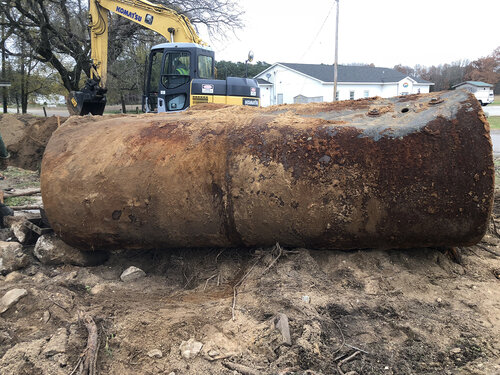Underground storage tanks (USTs) are integral components of many properties, serving as containers for a variety of substances, notably oil-based products. While these tanks are essential for storage purposes, they can present unique challenges and considerations, particularly when it comes to removal. Understanding the dynamics of properties housing underground storage tanks, and the necessity of professional services like an oil tank removal company, is crucial.
The Significance of Underground Storage Tanks
USTs are commonly used to store petroleum products such as gasoline, diesel, and heating oil. They are prevalent in residential, commercial, and industrial settings, catering to diverse needs like fueling vehicles, powering machinery, and heating homes. Their concealed nature offers space efficiency and minimizes environmental exposure, but it also necessitates careful monitoring and maintenance.
Risks and Challenges
Over time, underground storage tanks are prone to corrosion, leaks, or deterioration due to factors like age, material degradation, or improper maintenance. Leaks from these tanks can contaminate soil and groundwater, posing severe environmental and health hazards. Detection of leaks is often challenging due to their concealed nature, making early identification critical to prevent extensive damage.
Regulations and Compliance
Given the potential environmental and health risks associated with USTs, regulatory bodies have established stringent guidelines for their installation, operation, and removal. Compliance with these regulations is mandatory and involves periodic inspections, leak detection systems, and proper closure procedures when tanks are no longer in use. Failure to comply can result in hefty fines and legal consequences.
The Role of Professional Oil Tank Removal Companies
When it comes to decommissioning or removing underground storage tanks, seeking professional assistance from specialized oil tank removal companies is imperative. These companies possess the expertise, equipment, and certifications required to handle USTs safely and efficiently. Their services encompass various crucial stages:
Assessment and Testing: Thorough evaluation to determine the condition of the tank, potential leaks, and soil contamination.
Safe Removal: Utilizing industry-standard techniques and equipment to extract the tank without causing further damage or environmental harm.
Environmental Remediation: Addressing any soil or groundwater contamination caused by leaks from the tank, ensuring proper cleanup and restoration.
Compliance and Documentation: Ensuring adherence to regulatory requirements and providing necessary documentation for closure and compliance purposes.
Cost Considerations and Long-Term Benefits
The cost of UST removal varies based on factors like tank size, location, and extent of contamination. While the initial expense might seem significant, it pales in comparison to the potential costs of environmental damage or legal liabilities resulting from neglected tanks. Moreover, removing outdated or unused USTs increases property value, eliminates potential hazards, and prevents future liabilities.
Conclusion
Properties housing underground storage tanks demand careful attention, compliance with regulations, and proactive maintenance. Entrusting the handling and removal of these tanks to professional oil tank removal companies ensures adherence to safety protocols, environmental protection, and regulatory compliance. Prioritizing the proper management of underground storage tanks not only mitigates risks but also contributes to safeguarding the environment and the well-being of communities.

